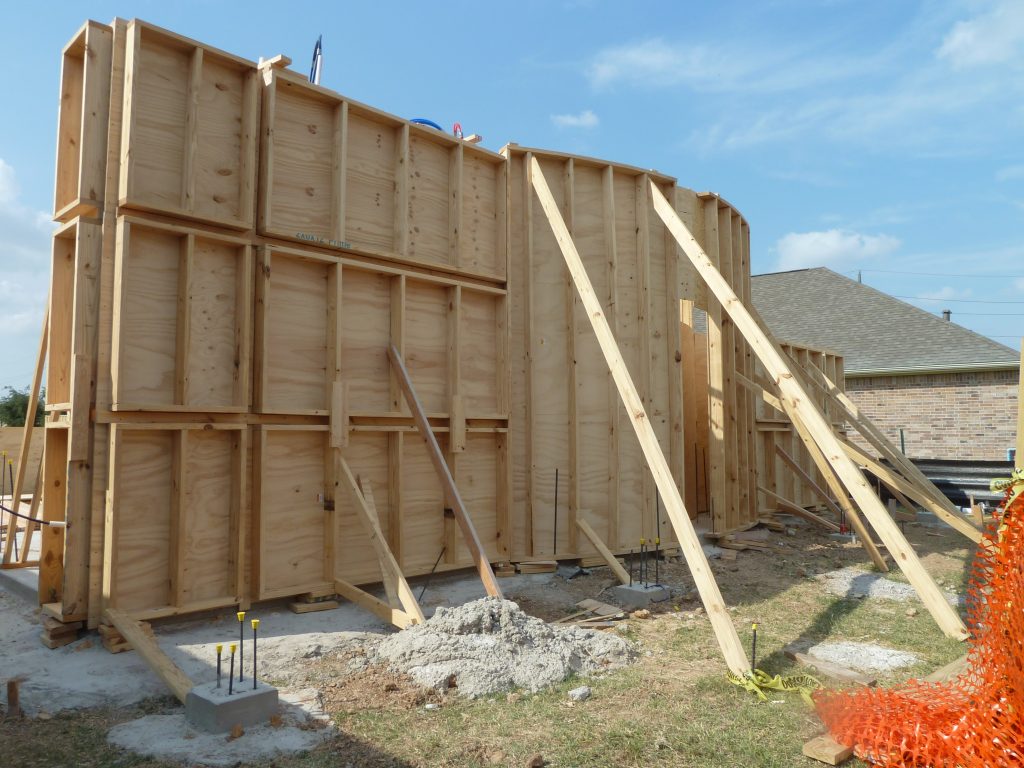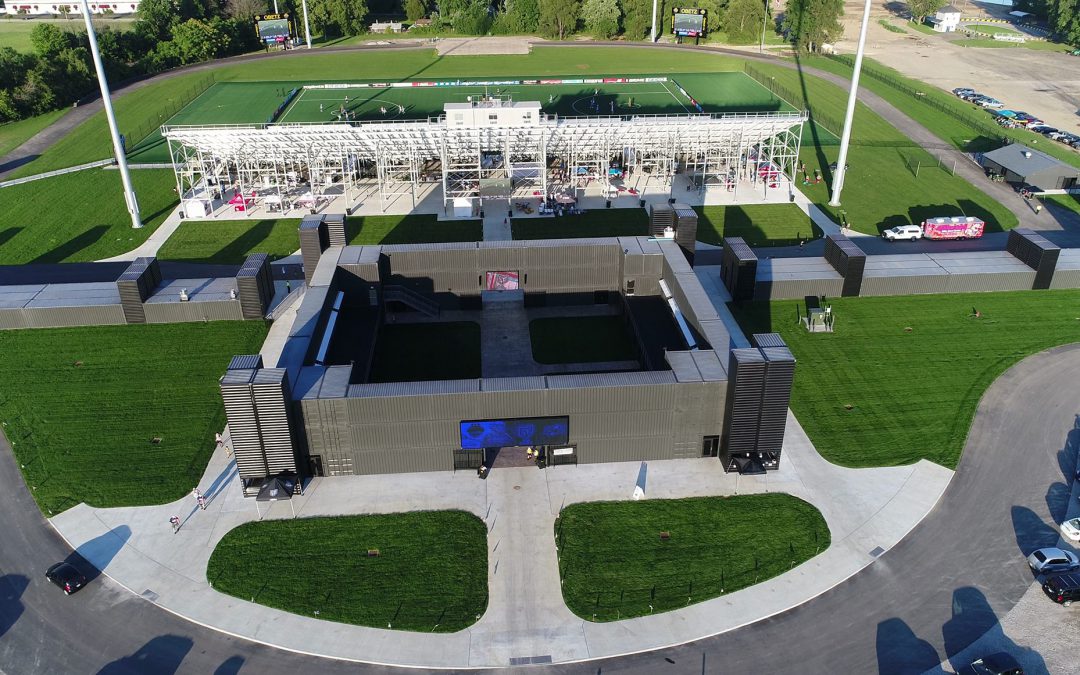Building professionals all around the world over time have uncovered some great alternative building methods using natural or sustainable materials. Just as any building method, there are pros and cons that surround it. We are going to talk about some of the most popular alternative building materials around the world, this will help us understand the benefits or challenges you may face when building a structure out of these materials.
Earth bags
Building with earth bags dates back centuries. This inexpensive construction method is very simple; take a mix of local soil and clay to develop a strong structure that is quickly built. The process is simple, you will need to fill Polypropylene or Burlap bags with your soil/clay mixture, stack them and being tamping to create a solid base for the next layer. Repeat this process until you have developed your basic structure. Wood framing helps to create windows and doors, while bags filled with gravel may also be used to create a good solid foundation.

Pros:
- Construction Costs – If you are skilled and knowledgeable enough to conquer the construction yourself, you will definitely save a lot of money by not having to pay a contractor to help you. Many people actually gather as many close friends or family that they can to assist them in the construction of their new earthbag home or structure.
- Eco-Friendly – Let’s face it, the reason this method has gained so much popularity is because of the low impact it has on our precious earth.
- Cost of Materials – The cost for most of the materials is fairly low when you compare it to other conventional building methods.
- Energy Efficient – Thick walls make for great insulation against the outside elements.
Cons:
- Labor – Creating earthen walls that have such a high mass, results in excessive and strenuous labor.
- Difficulty – If you are not working with someone that has had experience in building these types of structures, it can be very difficult to create a safe and efficient structure that can last.
- Upkeep – Because of the materials used, there are repairs that will need to be made more often than a structure made with conventional materials such as, steel, lumber, etc…
- Engineering – Building departments are not as accepting of this method in larger countries. These methods are not taught in schools, so many engineers are not familiar with how forces react with these structures, raising concern over safety and strength.
Straw bale
This building method utilizes bales of straw (wheat, rice, rye etc…) as structural elements or insulation for your structure, sometimes both. Straw bales can be packed to the correct density to create load bearing walls, or they can be used as a great insulation in a method known as Post and Beam. This creates a wall that is much thicker than conventional construction.


Pros:
- Energy Efficient – Thick walls and the great insulation properties that straw bales have, lead to amazing energy efficiency for these structures.
- Less harmful Chemicals and Materials – Not using spray or rigid insulation such as fiberglass, reduces the amount of harmful chemicals found in new homes.
- Low-Embodied Energy – Straw bales are made from the waste of another product and take much less energy to manufacture, considering sunlight was the main source of energy for growing the original plant.
- Fire Resistant – Even though this might not seem logical, straw bale walls if constructed correctly have been proven to be much more flame retardant than conventional lumber-frame construction. The density of the bales tend to contribute to this.
Cons:
- Not Conventional – This is not a conventional building method and the selected contractor may need to learn new construction techniques.
- Building Codes – It may take a little bit more work to get plans approved if straw bale is not part of your local building codes.
- Humidity – This method is not ideal for humid climates, as the walls need to be kept dry to avoid molding and other damage to the straw bales.
- Thick Walls – Even though thick walls can better your structures energy efficiency, it also means more of your overall square footage will be unusable.
Rammed Earth
Rammed Earth construction is an age old method that is still a great method used all around the world. Most of the time you will build a shell or “framework” for the wall out of lumber and begin adding damp natural raw materials such as soil, chalk, gravel, or lime. You will then tamp or compress the material to create a strong enough wall to remove the framework.


Pros:
- Easy to work with – Most of the time, this construction method takes little to no experience to be successful in building a structure.
- Materials – Because you are using local soil or materials, it can be easy to acquire the correct building materials to complete your project.
- Longevity – This method has been used for thousands of years and has proven to be a very trusted method for creating structures that stand the test of time.
- Construction Costs – The cost of materials are greatly reduced in this method if done right, compared to conventional materials.
Cons:
- Soil – Soil selection is critical and if you are using soil from your construction site, it will be another task to figure out what to do with the large holes created from gathering the material.
- Labor Costs – If you choose to not do the construction yourself, you will be struck with hiring a specialty contractor to come to your site which can get very costly.
- Design – Circular shapes are out of the question most of the time, due to the difficulty in designing the forms. Majority of rammed earth structures are box shaped.
Shipping/Cargo Containers
Building with shipping/cargo containers is exactly what it sounds like. There are millions of unused shipping container around the world that can be purchased and modified to create a structure. Most of the time this method will require quite a bit of modification and reinforcement to the containers in order to provide a safe and strong structure.

Pros:
- Quick Construction – This is the best quality when it comes to building with Shipping/Cargo Containers. Most of the modification and fabrication of the containers is done off-site by the manufacturer leading to quick construction on-site.
- Affordable – If designed correctly, container structures can be constructed at an affordable cost because of the amount of money saved on steel and other building materials.
- Eco-Friendly – Reusing these steel containers contributes the amount of containers that will end up in landfills. Also, by utilizing the steel how it is, you are avoiding the harmful process of casting steel which emits many harmful chemicals into the air.
Cons:
- Insulation – Container homes are not good for living in places with extreme heat or extreme cold. The amount of insulation needed to make them livable in such conditions will create a living space that may not be worth the cost or trouble.
- Design – A shipping container home can get very costly when it comes to engineering costs and reinforcement. If you are trying to create a home or structure with an open floor plan, this is not the best material to use. Cutting and modifying the container to make this possible will lower the structural integrity and will most likely cost more than the container did to make strong again.
- Building Codes – Most cities or towns will not be accepting of building structures out of shipping containers. You will need an experienced engineer to persuade the building department by developing a safe structural design that follows the building codes (if there are any).
Conclusion
All types of construction methods have their pros and cons, it is about finding the best for your project. With the surge in building sustainable or “green” be sure to take all options into consideration and select the method that best fits your location, skills, and budget. Be sure to check out some of the other sustainable building methods available at www.structure1.com, our team of engineers will be sure to develop a safe and efficient design to meet all of your wants and needs regardless of the materials used.
If you enjoyed this post, be sure to check out more of them here.

